
Fifth-generation CEO Soichiro “Sean” Kurachi, ’85, reflects on the 150th anniversary of Japan Corn Starch Co.
- By
- October 10, 2017
- Career Impact

Chicago Booth was founded in 1898. When it comes to longevity, however, Tokyo-based Japan Corn Starch Co.—a privately held comprehensive corn starch manufacturer founded in 1867—has even the second-oldest business school in the United States beat.
This July at the beautiful Hotel Okura Tokyo, the company’s president and CEO, Soichiro “Sean” Kurachi, ’85, hosted a celebration for the 150th anniversary of his family-owned business. The guest list for the event evidenced the company’s global reach—it has strong ties to the United States, sourcing all its corn from US farms and partnering with US academic institutions for research and development, and serves as the corn starch provider throughout Asia for many major companies, including Coca-Cola.
Kurachi welcomed guests from around the world: representatives of suppliers, buyers, associations, farms, corporate partners, and academic institutions that have had partnerships with JCS, many of whom have had long-standing, close relationships with both the company and the Kurachi family.
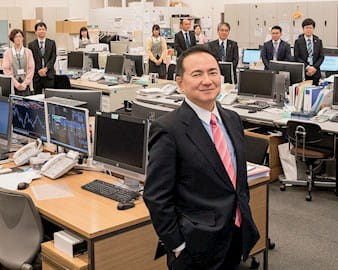
Among the honored guests were Stacey Kole, AM ’86 (Economics), PhD ’92 (Economics), deputy dean for alumni, corporate relations and the Full-Time MBA Program and clinical professor of economics, and Douglas J. Skinner, deputy dean for faculty and Eric J. Gleacher Distinguished Service Professor of Accounting.
“I was honored and privileged to be part of such an important event for Sean’s company,” Skinner said. “At Booth, we’re very proud to have him as one of our alums.” During the 150th anniversary celebration, Skinner joined other attendees in making congratulatory remarks, praising Kurachi and the company for such a “tremendous achievement.”
And yet, when Kurachi first arrived at Chicago Booth in the early 1980s, he might not have predicted that one day he would stand beside its esteemed faculty members at such a momentous occasion. As a new student on campus in Hyde Park in 1984, Kurachi admits, he struggled with Booth’s incredibly difficult curriculum. He nearly lost faith in his ability to complete his degree.
I am not a religious person, but I believe it was God or fate that I should go to a school in the corn belt. And that guided me to Chicago Booth.
— Soichiro “Sean” Kurachi
“I remember reading an accounting text and highlighting it with a yellow marker when teardrops started falling from my eyes,” he recalled. “I said to myself, ‘Why am I here?’” Yet Kurachi persevered and ultimately took the helm at his family’s company, guiding it to ever more success as it celebrates its sesquicentennial. “I am not a religious person, but I believe it was God or fate that I should go to a school in the corn belt,” he said. “And that guided me to Chicago Booth.”
Starch, and specifically Japan Corn Starch, is Kurachi’s birthright. He is the fifth-generation president and CEO of a company that is the major starch maker in Japan, a market that ranks second only to the United States. The company headquarters in Akasaka Inter City, Minato-ku, Tokyo, sits in a gleaming gold-accented high-rise, near the US Embassy. Mementos marking Japan Corn Starch’s history and successes adorn the offices: vintage advertisements, architectural photographs of the company’s factories under construction, a plaque from Chicago Booth commemorating its 150th anniversary. A display case showcases historic packaging in Japanese and English, glass cylinders with kernels of corn and wheat starch, and a bevy of award medallions and citations. Framed photographs of Sean’s late father, Hideo Kurachi, and his ancestors hang in places of honor on the walls and sit in frames in his office, overlooking a serene garden.

Of course, family is foundational at Japan Corn Starch. Kurachi’s great-great-grandfather, Karoku Kurachi, founded the company 150 years ago. Then based in what is now Isshiki-cho, Hazu-gun, Aichi, a coastal area in central Japan, the company originally produced wheat starch and wheat gluten. In 1962, the company was incorporated as the Japan Cornstarch Corporation. In 1964, Sean Kurachi’s father, Hideo, took over as the fourth-generation president, guiding an era of great development in the corn starch industry in Japan.
When Hideo Kurachi became chairman of the company in 2004, Sean Kurachi assumed the role of fifth-generation president. The following year, he moved the JCS headquarters to Tokyo, in a building overlooking the US embassy. As a descendant of the original founder, Kurachi shares a unique position with the leaders of other long-lasting family businesses such as S. C. Johnson & Son Inc. and the Wallenberg business empire of Sweden.
Kurachi earned his bachelor of science in business and commerce in 1983 from Keio University, Japan’s oldest private university, with campuses in Yokohama and Tokyo. Japanese universities had a reputation for fearsome entrance exams, but somewhat lenient graduation requirements, and Kurachi admits that he was not a particularly zealous university student. He then sought out an opportunity to further his business education by pursuing an MBA. At the time, Chicago Booth was one of the few major US business schools that would accept students directly from college, and Kurachi entered the Full-Time MBA Program in January 1984.
The corn belt climate provided a less than hospitable welcome. “It was very cold,” he stressed. “I remember going out in the car to a Japanese restaurant wearing my contact lenses,” he said. “By the time I returned to my dormitory, my spare saline solution had frozen in the bottle.”
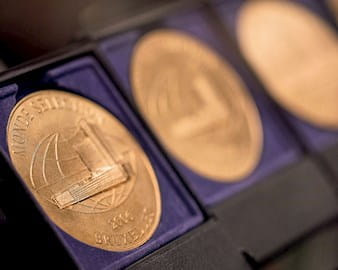
Booth gave Kurachi a solid grounding in data-driven management that he relies on to this day. “For business, numbers are everything,” he said. “The success of JCS owes a lot to my education at Chicago Booth—as a result of its analytic focus, we have become a very quantitative-oriented company. We analyze all the data and have become very profitable.” He also credits Booth for imparting a firm understanding of consumer marketing, industrial marketing, finance, and organizational behavior. Upon returning to Japan, Kurachi had a more objective view of his family’s company. “I was able to identify risk more clearly—in particular, the risk of securing stable corn supply,” he said. “We solved this issue by setting up a US subsidiary to obtain high-quality corn at a reasonable price and to ensure direct information from US farmers on trends in the US market.”
Kurachi’s vision is rooted in his time at Booth, and in particular in the instruction of Harry L. Davis, with whom Kurachi studied for two consecutive quarters. He credits the Roger L. and Rachel M. Goetz Distinguished Service Professor of Creative Management with inspiring him to consider how the starch business could help address social problems. “Professor Davis taught me the importance of marketing analysis driven by demographic considerations when creating new products,” Kurachi said.
They recommended that the company offer on-site childcare, a forward-thinking approach that is gaining ground today but was not common at the time. “You have to remember that this was 30 years ago,” Kurachi said. “I was proud to make that recommendation.”
Kurachi’s insight proved prescient back home in Japan. Since the early 1990s, the country has suffered from a lack of day care. Over the decades, many Japanese companies have introduced in-house childcare as a way to address this issue and to boost women’s participation in the workforce.
“What stands out most about Sean is his humble nature and super friendliness,” said classmate Chali Sophonpanich, ’85, president of City Realty Ltd., in Bangkok, Thailand. “He is also very focused and determined. And most of all, he really means well for others.”
While at Booth, Kurachi also received the best single piece of business advice. “We were taught that there are no right answers in business,” he said. “The question is, ‘Can you turn the answer you have into the right one?’”
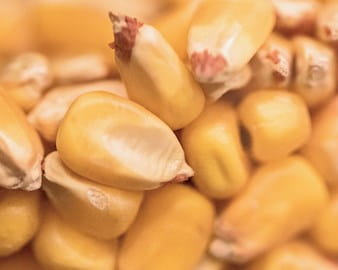
Coming up with innovative ways to turn the answer they have into “the right ones” runs through all the previous Kurachi generations at Japan Corn Starch. In the wake of World War II, Japan faced food shortages. In 1953, Kurachi’s grandfather, Tomojiro Kurachi, the third-generation CEO, developed a substitute for rice that was made from potato starch and flour powder. This helped alleviate the postwar food shortages, saving many lives. “People could not survive without starch,” Kurachi said. “We are very proud that we could help sustain human lives through starch.”
Today, Japan Corn Starch offers a full suite of starch-based products, used in everything from health foods to sweeteners to pharmaceuticals. JCS has also shown its ability to adapt to the rapidly changing demographics of Japan—its Silver Sweet product is used in liquid diets favored among the elderly. The company is putting the finishing touches on the new state-of-the-art Kanto plant in Kashima, Ibaraki, on the coast of the Pacific Ocean, north of Tokyo.
“He had the vision to see the importance of cross-border relationships,” Sophonpanich said. “He developed many strong links with major players in many countries, and has invested in facilities in those countries that enabled him to grow his network.”
The business has focused particularly on environmental problems. JCS established Evercorn Inc. in Lansing, Michigan, in 1993, entering the business of biodegradable plastics using starch as the main ingredient. They developed an asbestos dust dispersion control agent, based on a syrup made from starch. JCS has worked to reduce its environmental footprint as well, instituting measures to reduce CO2 emissions and prevent pollution, and developing recycling facilities. With his employees’ welfare of paramount importance, Kurachi oversaw the seismic retrofitting of the company’s Aichi plant.
To mark his company’s 150th anniversary, Kurachi has laid more groundwork to continue innovating in the coming decades. JCS opened an office in Research Park at the University of Illinois at Urbana-Champaign to collaborate with the university on logistics research and R&D activity. JCS is also focused on marketing a granulated cornstarch product, GRASTAR, based on 100 percent non-GMO materials. The product acts as a pharmaceutical additive, maintaining the hardness needed in tablets. It is designed to be user-friendly for those with difficulty swallowing, and to melt rapidly in the mouth for easy digestion.
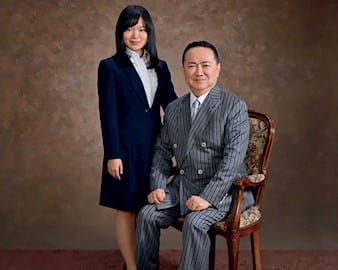
For Kurachi, the starch business harbors possibilities beyond profit-making that his competitors overlook. “Our US and Japanese competitors view starch as a commodity, but we believe starch has a life, and is a living organism,” he said. “Because we do not regard starch as a commodity, the goal of our business is to use the starch business to help solve some of the social challenges that people face.”
In 2048, Booth will celebrate its own 150th anniversary. Kurachi has been instrumental in ensuring the school will thrive in the decades leading up to its own sesquicentennial celebrations and beyond. In appreciation of his Booth education, he made a generous contribution of $1 million to help support the University of Chicago Francis and Rose Yuen Center in Hong Kong, which will become home to the Executive MBA Program Asia in 2018.
This past spring, Kurachi joined fellow alumni Brian P. Baker, ’97, Ray Iwanowski, ’97, and John Watson, ’80, to fund the Chicago Booth Impact Challenge: Multiply Your Impact, offering matching funds for gifts to Booth. After the Booth alumni community rose to the challenge, exhausting the $500,000 in matching funds, Kurachi and his fellow challengers agreed to meet the overflow and match every gift. More than $1.1 million was raised for the school, including a donation from Kurachi to honor Japan Corn Starch’s 150th anniversary. “Sean is extraordinarily generous with giving his time and making contributions to the school,” Skinner said. “I’m looking forward to him having a very important role with the school in the future.”
During the 1980s, Booth often had as many as 30 or more Japanese students pursuing MBAs. While that number has waned in the intervening decades, Booth has been working to improve enrollment from Japan (see “The View from Tokyo”). Kurachi has been instrumental in helping build relationships for Booth in Japan, and he has joined the Asia cabinet of the Global Advisory Board. “Sean has so much energy,” Kole said. “He’s very passionate about connecting Japanese students with Booth to learn about the school and our programs.”
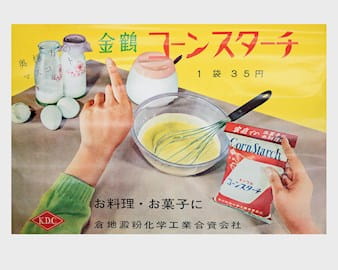
While retirement may be far off for the very active and youthful CEO—he regularly plays tennis, swims, and practices kendo, a strenuous Japanese martial art—Kurachi nonetheless has already begun laying the groundwork for the next generation of leadership at Japan Corn Starch. His 22-year-old daughter, Erika, would be the sixth generation of Kurachis at the helm of the company and the first woman.
Currently a student at the University of Tokyo, Erika is majoring in corporate finance, financial engineering, and macroeconomics. She expects to graduate in March 2019. Already, Erika has an international pedigree: she studied as an exchange student at the University of Illinois at Urbana-Champaign, joined the Volunteer in Asia program at Stanford University, and completed an internship at Siemens Energy Inc., in Charlotte, North Carolina, earlier this year.
For a family business to survive and continue to grow from generation to generation, it is important to put effort into your children’s education.
— Soichiro “Sean” Kurachi

Kurachi is deeply committed to preparing for the eventual handover of responsibility. “I think for the family business to survive and continue to grow from generation to generation, it is important to put effort into your children’s education,” Kurachi said.
Following his own education at Booth, Kurachi himself almost did not return to JCS. He launched a career in the United States with the aim of obtaining a green card, and stayed in America working for Procter & Gamble in Cincinnati, Ohio, and then for Goldman Sachs, Drexel Burnham Lambert, and Merrill Lynch in New York.
He had a successful career and many of the luxuries afforded by that success. “I bought an apartment in New York, from which I could oversee Central Park. I bought a car and had a Rolex watch,” he said. Yet, feeling unfulfilled despite his material success, Kurachi realized his future lay back in Japan with the family business, and he decided to go home. His return was always the plan in the eyes of his father Hideo, JCS’s fourth-generation CEO. “Since the day I was born, my father kept telling me, ‘This is your fate,’” Kurachi recalled. “‘You have been given this life by God, and yours is to continue this business.’”
Now, it is Kurachi’s turn to help prepare Erika, eventually, to assume the reins at Japan Corn Starch. He is confident that she can continue the success of a company that controls 23 percent of the Japanese market for corn wet milling. He’s also hopeful that she can blaze a trail as a female leader in a country where women remain underrepresented at the upper levels of management.
“One of her challenges as a female leader in Japanese society will be to stand at the forefront of the Japanese female workforce,” Kurachi said. “I look forward to a new era of invention and entrepreneurial efforts under my daughter.”
—By Martin Foster